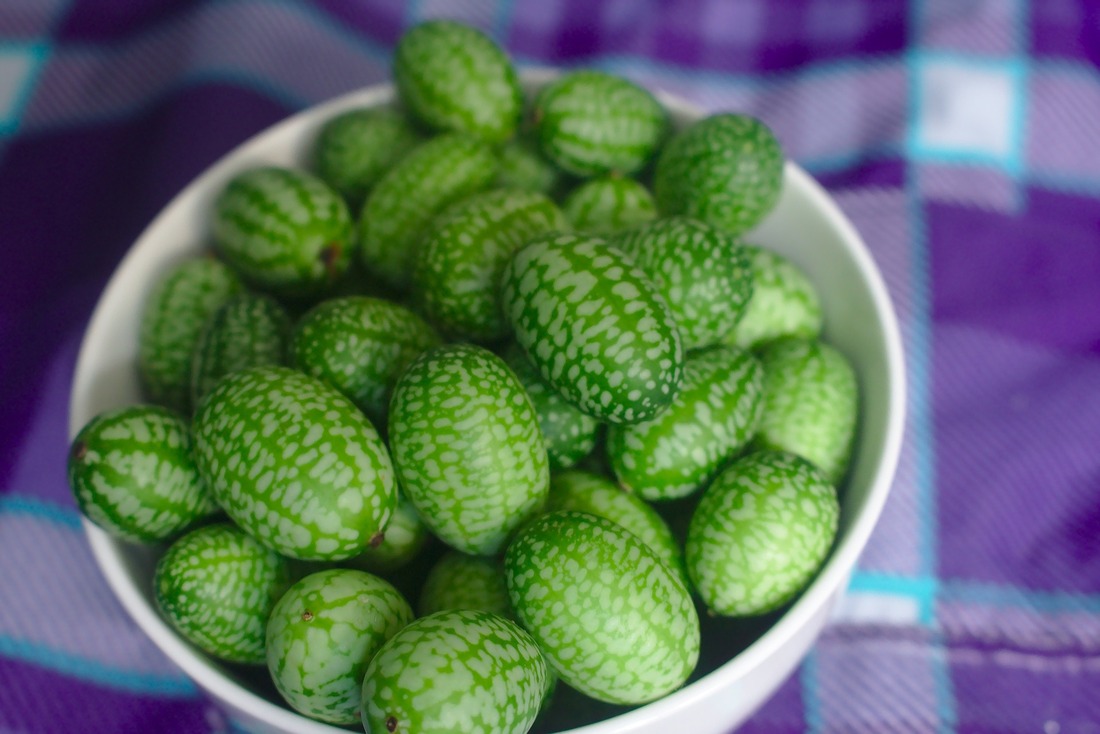How to Grow and Care for Cucamelons (melothria scabra)
Cucamelons (melothria scabra), also known as Mexican Sour Gherkins, mouse melons, and Mexican sour cucumbers look like a tiny watermelon, but have a flavor all of their own. They are said to taste a bit like a pickled cucumber with their tangy, tart flavor. While some claim they have a hint of lime, others think the undertone is closer to a lemon. You'll need to try them yourself to find out for sure!
Planting Cucamleons
Choosing a Location for Cucamelons
Choose an area that receives full sun for six to eight hours a day. Keep in mind that you do not need six hours of consecutive exposure. As long as the total number of hours adds up to at least six hours, some shade during parts of the day is fine.
Preparing the Soil for Cucamleons
Like cucumbers, the Mexican gherkin prefers fertile, well-drained soil. Add plenty of organic matter, such as compost or well-rotted manure, and work it into the top six inches of your soil. This improves both drainage and aeration while adding vital nutrients to the soil.
Apply 10-10-10 or 5-10-10 fertilizer following the recommended application rate on the container and work it into the soil.
Apply 10-10-10 or 5-10-10 fertilizer following the recommended application rate on the container and work it into the soil.
Planting Cucamelon Seeds
Cucamelons can be direct sown in the garden once all danger of frost has passed and the soil has warmed. Cucamelon seeds germinate best at soil temperatures between 65 and 90 degrees F.
Sow the seeds to a depth of ½ inch, spaced 6 to 12 inches apart in rows or hills. Cover the seeds with soil and firm it down gently with your hands to secure the seeds.
Sow the seeds to a depth of ½ inch, spaced 6 to 12 inches apart in rows or hills. Cover the seeds with soil and firm it down gently with your hands to secure the seeds.
Watering Cucamelons
Moisten the soil and keep it moist until your cucamelons emerge in 4 to 13 days. Once seedlings emerge and are established, reduce water to once or twice a week or whenever the soil feels dry to the touch 1 inch below the surface.
Provide a Trellis for your Cucamelons
Cucamelons produce long vines similar to cucumber vines. They do best if they are trained to climb a trellis ofr fence. Erect the trellis when you plant the seeds so it will be ready when they begin to grow.
Fertilizing Cucamelons
Apply water-soluble fertilize, like Miracle-Gro, to your cucamelons when they begin to vine. Repeat every 10 to 14 days as needed. Use the health of your cucamelons as a guide to detetermine if they need additional fertilizer.
Harvesting Cucamelons
Begin picking your cucamelons once they reach fullsize. Picking the ripe melons every day will keep them producing for weeks. Allowing ripe melons to remain on the vine sends a message to the plant that it has produced enough fruit (and seeds) to reproduce and it will stop sending out new blooms and fruit.
Can you plant cucamelons from seedlings?
If you prefer to start your cucamelons from seedlings instead of direct sowing the seeds, you will likely need to strat the seedlings inside yourself in early spring. Seeds are readily available at online seed companies and may be listed a mouse melons, but finding seedlings at the nursery may prove to be a challenge.
How do you plant cucamelon seedlings?
Choose a location and prepare the soil as outlined above. Plant the seedlings to the orginal planting depth in their pots. Firm fresh soil around the seedlings to secure the plants. Water to saturate the soil and keep the soil moist until you see new growth on the seedlings. Reduce watering to once or twice a week or whenever the soil feels dry 1 inch below the surface.
